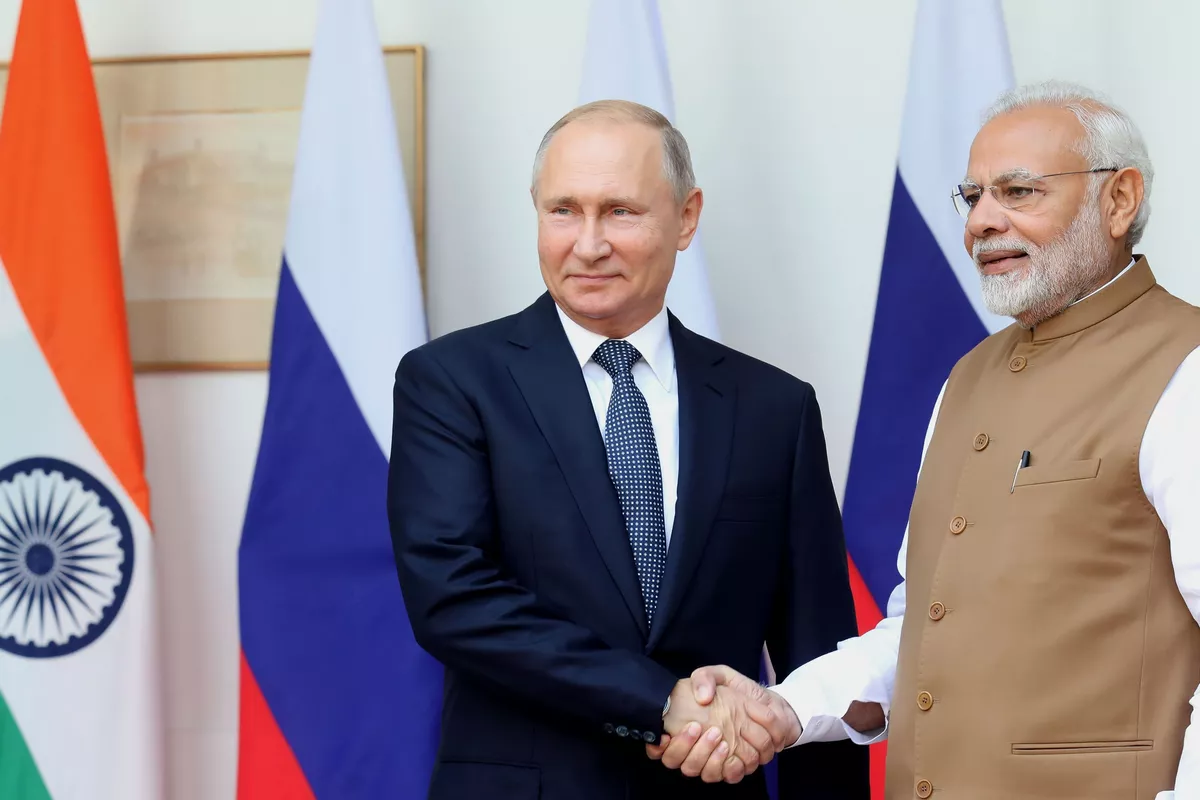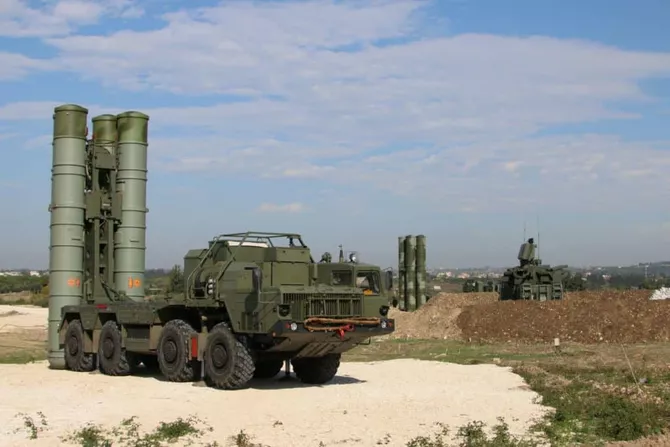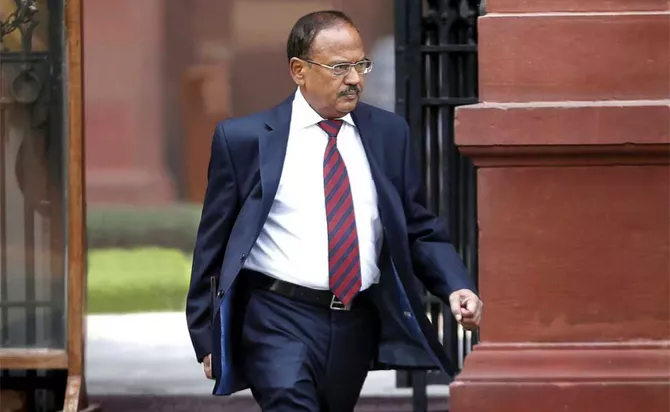
Photo: Ifri
The evolving defense relationship between India and Russia has once again captured global attention, as the two nations discuss expanding the supply of Russian-made S-400 Triumph surface-to-air missile systems.
This development is more than a mere arms deal-it is a reflection of New Delhi’s long-term strategic vision, its complex geopolitical balancing act, and its determination to assert independence in the face of mounting pressure from Washington.

Photo: Missile Threat
In 2025, according to reports in Russian media, India and Russia concluded several major aviation contracts. Among the key points of discussion was the future of the S-400 program. The Indian Air Force already operates three squadrons of these systems, strategically deployed along its western and eastern borders to deter potential threats from China and Pakistan. A fourth squadron was originally scheduled for delivery in 2026 and a fifth in 2027. These deployments are not just symbolic-they represent India’s commitment to modernizing its air defense capabilities amid a rapidly shifting regional security landscape.
However, last year The New Indian Express, citing Indian Air Force Chief Marshal Amar Preet Singh, reported that deliveries were expected to be completed by 2025. Since then, unforeseen delays have pushed the timeline back by at least a year. The reason is no secret: Russia’s protracted war in Ukraine has consumed vast industrial and military resources, disrupting the production and delivery schedules of sophisticated systems like the S-400. Despite these challenges, Moscow has assured New Delhi that all five units will be delivered by 2026-2027, reinforcing Russia’s reliability as India’s defense partner of choice.
India’s ambition to acquire the S-400 is not new. The journey began in 2015, when New Delhi publicly declared its intention to purchase the cutting-edge air defense system. A landmark $5.43 billion deal was signed during Russian President Vladimir Putin’s visit to India in October 2018, marking a significant milestone in bilateral defense cooperation. Deliveries began in 2021, with the original plan calling for all five squadrons to be operational by the end of 2023. Russia’s full-scale invasion of Ukraine in February 2022, however, created unprecedented obstacles for its defense industry, forcing both nations to adapt and reassess their timelines.
Each S-400 squadron is a formidable force in itself, consisting of two batteries with a total of 128 missiles, offering multiple interception ranges of 120, 200, 250, and 380 kilometers. These systems are equipped with advanced long-range detection radars and mobile launch vehicles capable of operating in diverse terrain. For India, this technology represents a vital layer of defense, especially against adversaries with growing aerial and missile capabilities.
The urgency behind India’s S-400 procurement was underscored by recent clashes with Pakistan. During the conflict, Islamabad claimed it had struck the Adampur Air Force Base, allegedly destroying an S-400 battery. Days later, Indian Prime Minister Narendra Modi personally visited the base, standing defiantly in front of an intact S-400 launcher. The message was unmistakable: India’s defenses remain strong, and its partnership with Russia has delivered tangible results on the battlefield.
In the aftermath of the conflict, Indian Air Force Commander Amar Preet Singh provided further details in an interview with Military Watch Magazine. He revealed that the S-400 systems had successfully prevented Pakistani aircraft from approaching within striking distance. Even more remarkably, Singh disclosed that five enemy fighter jets were shot down during the conflict, with one destroyed from a record-breaking distance of 300 kilometers. “This marks the largest ever recorded ground-to-air destruction of a target that we can publicly disclose,” he said, emphasizing the system’s unparalleled capabilities. Such battlefield performance has only strengthened India’s resolve to acquire additional units and accelerate deliveries.
The August visit of an Indian delegation to Moscow, led by National Security Advisor Ajit Doval, highlighted just how central the S-400 program has become to India’s defense strategy. According to India Today, the talks focused not only on expediting deliveries of existing orders but also on negotiating potential additional purchases. India’s message to Moscow was clear: the country needs more systems, and it needs them quickly. This is not just about military hardware-it is about safeguarding India’s sovereignty in an increasingly volatile region.

Photo: NDTV
At the same time, India is not solely reliant on foreign suppliers. Alongside its imports of Russian systems, New Delhi is working to develop its own advanced air defense solutions through Project Kusha, spearheaded by the Defence Research and Development Organisation (DRDO). This dual-track approach-strengthening domestic defense capabilities while leveraging Russian technology-reflects India’s pragmatic strategy of diversification and self-reliance.
The S-400 Triumph itself is a technological marvel. Designed to engage a wide range of aerial threats, it can destroy aircraft and cruise missiles at ranges of up to 400 kilometers and intercept ballistic missiles traveling at speeds of up to 4.8 kilometers per second from a distance of 60 kilometers. Few systems in the world can match its versatility and precision, which explains why India was willing to risk diplomatic friction to acquire it.
Indeed, New Delhi’s decision to purchase the S-400 has repeatedly tested its relations with Washington. Following the 2018 signing of the deal, the United States warned India that the transaction could trigger punitive measures under the Countering America’s Adversaries Through Sanctions Act (CAATSA). When the first deliveries began in 2021, Washington renewed its calls for India to cancel the purchase.
“The United States strongly urges its allies and partners to refrain from acquisitions that could trigger sanctions from Washington,” Deutsche Welle quoted the U.S. Secretary of Defense as saying at the time.
Interestingly, unlike Türkiye, which faced severe consequences for its own S-400 purchase-including being expelled from the F-35 fighter jet program and losing access to U.S. Patriot missile systems-India has so far avoided direct sanctions. This leniency reflects Washington’s recognition of India’s crucial role as a counterweight to China in the Indo-Pacific region. However, tensions remain. Today, Donald Trump and his administration have shifted their focus, threatening India with sanctions not over missile purchases but over its continued imports of Russian oil. Despite these warnings, New Delhi has shown no signs of backing down.
India’s resolve to maintain its strategic autonomy is shaped by decades of navigating great-power politics. Its defense partnership with Russia is rooted in historical trust and shared interests, even as India simultaneously deepens its ties with the United States and other Western nations. By continuing to negotiate with Moscow while resisting American pressure, India is sending a clear signal: its national security decisions will not be dictated by external powers.
This latest round of discussions over additional S-400 systems underscores a broader truth about India’s foreign policy. In a world increasingly defined by geopolitical rivalry, New Delhi is determined to chart its own course, leveraging relationships with multiple partners to protect its sovereignty and secure its future. Whether in the skies over its borders or in the halls of diplomacy, India’s message remains consistent: strategic independence is non-negotiable.
By Tural Heybatov
Share on social media